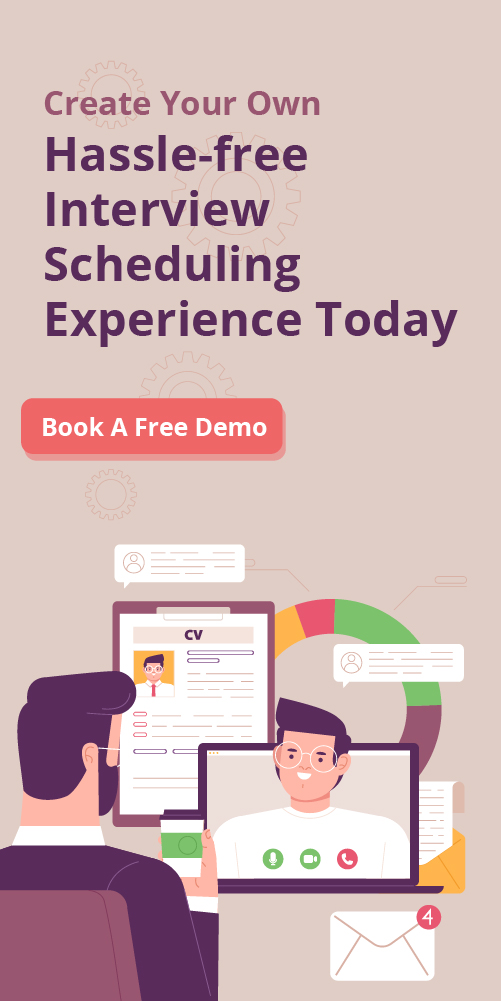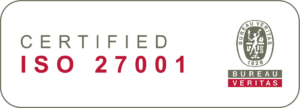Hey recruiters, how have you been organizing your interviews lately? With the impact of uncontrollable elements on the business environment and the rise of new technology, hiring managers are changing the way they recruit considerably, including the way they run interviews.
While the optimal interview method depends on the nature of the industry, companies’ resources, and other factors, having a solid grasp of different interview formats will help you find out what works best for your company and effectively meet the hiring needs in a fast-moving job market.
In this article, we will cover seven different types of interview formats with detailed analysis to help you identify which format – or combination of formats – will be the most optimal for your organization.
What are Interview Formats?
Interview formats are structured approaches and ways to organize interviews between your recruiting team and potential candidates. They are designed by recruiters to properly assess candidates’ personalities, competencies, motivations, and cultural fit.
As mentioned earlier, the optimal format – or combination of formats – for each open vacancy may vary depending on the industry norms, requirements of specific roles, and each company’s general policies. We will go through the seven basic interview formats in the next section.
Interview Formats Categorized by Interview Flow
How can you organize the structure of your interviews? In terms of interview flow, there are three formats you can incorporate into your hiring plan, as below.
Structured Interviews
A structured interview is when recruiters design different sets of questions in advance. The content of each question set is fixed and used during meetings with every candidate applying to similar positions. These sets often include a noticeable portion of standardized questions, and all similar candidates are asked the same set of questions in the same order.
- Pros: Structured interviews are easy to organize, and a few modifications are required during each meeting. This structure also ensures that no requirement or note will be missed during conversations as everything has been mapped out clearly. Recruiters can set clear criteria based on sets of questions in advance and thus easily evaluate and compare candidates’ performance.
- Cons: Candidates may feel rigid, formal, or somewhat uncomfortable with these fixed sets of questions and interview flow. As for recruiters, this interview format does not allow space for flexibility and further conversations or in-depth questions.
Many companies use a structured interview format for their phone screen to quickly shortlist candidates. For samples of pre-screening interview questions, check out our blog on Pivotal Tips For Creating Pre-screening Interview Questions.

Unstructured Interview
An unstructured interview format is when recruiters may have certain topics or key points that need to be discussed, but they don’t prepare specific predetermined sets of questions. Questions are decided on the spot to ensure efficient two-way conversations.
- Pros: In contrast to structured interviews, this interview format gives a sense of being more conversational and engaging. Additionally, recruiters also have more space for follow-up or in-depth questions to develop a clear understanding of candidates’ competencies and fit.
- Cons: However, developing suitable questions on the spot may be somewhat challenging and lower the ability to control the interview flow or the length of conversations.
Semi-structured Interview
A semi-structured interview is the blend of the two former interview formats as recruiters have more open-ended questions along with general standardized ones. While some of them are predetermined, the others are open-ended and more personalized.
Therefore, this interview format may ensure key points are covered while offering enough flexibility to create a sense of more conversation and engagement.
Interview Formats Categorized by Participants
Interview formats can also be decided and structured around companies’ recruiting needs and stakeholders’ roles. The participant-based approach will have six common formats.
Individual Interview

The individual interview format is perhaps the most familiar and widely used. It involves a one-on-one interaction between the interviewer and the candidate. This format offers simplicity and efficiency, allowing for a thorough evaluation of the candidate’s performance.
Pros:
- Offers personalized interaction and the opportunity to build rapport with the candidate.
- Allows for a focused evaluation of the candidate’s qualifications and suitability for the role.
- Easy to organize and manage, with fewer logistical challenges compared to group interviews.
Cons:
- May lead to interviewer bias due to the limited perspectives involved.
- Can be time-consuming, especially when interviewing multiple candidates individually.
Tips for Success:
- Prepare Comprehensive Questions: Develop a set of well-rounded questions that cover the candidate’s background, experience, and skills relevant to the role.
- Tailor Questions to the Role: Craft job-specific questions that assess the candidate’s suitability for the position and their ability to meet job requirements.
- Utilize Situational Questions: Incorporate situational interview questions that challenge candidates to demonstrate problem-solving abilities and assess their approach to real-world scenarios.
- Avoid Biases: Stay mindful of biases that may influence evaluations. Maintain objectivity and focus solely on the candidate’s qualifications and responses.
Group Interview

The group interview is another common format when a group of candidates meets one or several hiring team members. Recruiters are able to not only evaluate applicants based on the provided information but also assess candidates’ competencies and how they use soft skills (e.g., communication and interpersonal skills) while interacting with others during these meetings.
Benefits of Group Interviews:
- Behavioral Assessment: Recruiters can observe candidates’ behaviors and soft skills, such as communication and interpersonal skills, in a group setting. This provides valuable insights into how candidates interact with others and collaborate on tasks.
- Comparative Evaluation: Group interviews offer opportunities to differentiate between candidates and compare their strengths and weaknesses directly. This comparative assessment is challenging to achieve in individual interviews and can facilitate more informed hiring decisions.
Tips for Success:
- Structured Questioning: Pose specific questions to individual candidates or present a question to the group for discussion. This approach allows recruiters to gauge candidates’ responses and their ability to contribute to group conversations effectively.
- Teamwork Assessment: Assess candidates’ teamwork abilities by observing how they engage with others during group activities or discussions. Look for candidates who demonstrate collaboration, leadership, and adaptability in a group setting.
- Efficient Time Management: Use online interview scheduling software to streamline the process of organizing and managing group interviews. This technology can help optimize scheduling logistics and ensure a smooth interview experience for both recruiters and candidates.
Effective Utilization of Group Interviews:
- High-Volume Hiring: Group interviews are particularly beneficial for roles with a high volume of applicants or when hiring to fill multiple positions simultaneously. They allow recruiters to engage with multiple candidates efficiently and expedite the selection process.
- Team Dynamics Evaluation: By observing candidates interact with each other, recruiters can gain insights into their potential fit within the team dynamic. This firsthand observation helps identify candidates who are likely to thrive in collaborative work environments.
Panel Interview

Panel interviews are somewhat similar to face-to-face interviews, but they are meetings between one candidate and two or more members of the hiring team. This group of interviewers may include people coming from one or different functions, such as recruiters, future supervisors, and line managers. For instance, interviews for positions in academia are usually conducted in a panel format.
Benefits of Panel Interviews:
- Reduced Bias: With multiple interviewers, panel interviews minimize individual biases and provide a more holistic assessment of candidates. This diversity of perspectives enhances the fairness and accuracy of hiring decisions.
- Comprehensive Evaluation: Panel interviews enable a thorough examination of candidates’ qualifications, skills, and fit for the role. The collaborative discussion among panelists fosters a deeper understanding of each candidate’s potential contributions.
Considerations for Panel Interviews:
- Time Management: While panel interviews offer valuable insights, they may require significant time and resources from the hiring team. Recruiters should prioritize candidates and establish a clear interview structure to ensure efficiency.
- Candidate Experience: Recognize that panel interviews can be intimidating for candidates. Take steps to create a welcoming atmosphere and provide opportunities for candidates to engage with panelists and showcase their abilities.
Tips for Success:
- Preparation and Coordination: Conduct a pre-interview meeting to assign roles and establish a leader who will guide the interview process. Clarify the responsibilities of each panelist to ensure a cohesive and organized discussion.
- Focus on Culture Fit: Panel interviews allow candidates to interact with multiple representatives of the organization, facilitating assessments of culture fit. Emphasize cultural values and organizational dynamics during the interview to gauge alignment with the company ethos.
Strategic Application of Panel Interviews:
- Critical Positions: Panel interviews are ideal for high-stakes roles or niche positions that require specialized expertise. They provide a platform for in-depth discussions and evaluations necessary for identifying top talent.
- Streamlined Process: For senior or leadership positions involving multiple stakeholders, panel interviews offer a streamlined approach to assessing candidates’ suitability. Consolidating interactions into a single session saves time and expedites decision-making.
Case-study Interview Format

The case interview format presents candidates with real-world business problems to analyze and solve. Unlike traditional interviews, the focus is on engaging in a discussion to work through solutions rather than providing standard responses. Interviewers often draw from their own experiences to present relevant scenarios for discussion.
- Interactive Problem-Solving: Candidates are encouraged to actively engage in problem-solving discussions, allowing interviewers to assess their analytical abilities and decision-making processes in real-time.
- Insightful Evaluation: Case interviews offer deeper insights into a candidate’s thought processes and problem-solving approach. Interviewers can observe how candidates apply structured frameworks and think creatively to address complex challenges.
Benefits of Case-study Interviews:
- Multiple Solutions: Unlike traditional interviews with predetermined answers, case interviews allow for multiple solutions. This format provides candidates with the opportunity to showcase their business acumen and innovative thinking.
- In-depth Assessment: Through detailed discussions, interviewers gain a comprehensive understanding of candidates’ skills and capabilities relevant to specific roles, particularly in management consulting, operations, and marketing positions.
Tips for Success:
- Provide Detailed Scenarios: Ensure clarity by offering comprehensive information about the business problem being discussed. This minimizes the need for candidates to seek clarification and allows them to focus on problem-solving.
- Take Thorough Notes: Interviewers should maintain clear and detailed notes throughout the interview process to accurately capture candidates’ responses, insights, and problem-solving methodologies.
Strategic Application of Case-study Interviews:
- Skill Assessment: Case interviews are particularly effective for assessing candidates’ skills and knowledge in specific fields, such as strategic decision-making, problem-solving, and industry expertise.
- Role Relevance: Utilize case interviews when evaluating candidates for roles that require strong analytical and problem-solving abilities. This format enables recruiters to gauge candidates’ aptitude for addressing real-world challenges inherent to the position.
Virtual Interview Format

The virtual interview format eliminates the need for in-person meetings, offering numerous advantages beyond maintaining social distancing protocols. While initially propelled by the pandemic, virtual interviews have become a staple in modern recruitment strategies, enabled by advancements in technology and increased technical capabilities across companies.
Benefits of Virtual Interviews:
- Cost and Time Savings: Virtual interviews eliminate the need for travel, resulting in significant cost savings on expenses associated with candidate transportation and accommodation. Additionally, they offer flexibility in scheduling, allowing interviews to be conducted from anywhere and at convenient times, accommodating candidates across different time zones.
- Screening Efficiency: Particularly beneficial when managing large applicant pools, virtual interviews serve as an effective screening tool to assess candidate qualifications and suitability before proceeding to onsite meetings. This initial screening phase helps streamline the hiring process and optimize resource allocation.
Tips for Success:
- Technology Proficiency: Prioritize familiarity with the chosen video conferencing platform to minimize technical issues during interviews. Provide clear instructions and guidance to candidates in advance, ensuring they are equipped to navigate the virtual interview environment seamlessly.
- Optimal Setup: Create a conducive interview environment by selecting a well-lit, distraction-free space with a strong internet connection. Both interviewers and candidates should prioritize professional presentation and ensure minimal disruptions throughout the virtual interview process.
- Document Accessibility: Inaccessible interview materials can prevent candidates with disabilities from accessing important information. Remediation of inaccessible digital documents helps recruiters meet required standards, ensuring that candidates with disabilities can understand the content with the help of assistive technology.
Strategic Application of Virtual Interviews:
- Geographically Dispersed Participants: Virtual interviews are ideal for engaging candidates and interviewers across multiple locations, facilitating seamless communication and collaboration. This format promotes inclusivity and accessibility, enabling participation regardless of geographical constraints.
- Complementary Role in Interview Process: While virtual interviews lack the nuances of in-person interactions, they serve as an efficient screening tool for initial candidate assessments. Consider incorporating virtual interviews as part of a multi-stage interview process, complementing subsequent rounds of in-person meetings to address any limitations.
Phone Screening Interview Format
Phone interviews serve as the initial step in the hiring process, especially when faced with a high volume of resumes and applicants. They provide a valuable opportunity for hiring authorities or recruiters to engage with candidates, gather additional information, and assess their suitability before advancing to subsequent interview stages.
Benefits of Phone Screening:
- Candidate Qualification: Phone screening helps identify candidates who meet the required qualifications and are a good fit for the position. By verifying information on resumes and asking targeted questions, recruiters can efficiently narrow down the candidate pool.
- Time-Saving Approach: Conducting phone screens saves time by filtering out unqualified candidates early in the process. This strategic approach ensures that only promising candidates proceed to further interview stages, optimizing resource allocation and minimizing wasted effort.
Tips for Success:
- Consistency in Questioning: Maintain consistency by asking all candidates the same set of questions during phone screens. This ensures fairness and enables objective evaluation across the candidate pool, facilitating informed decision-making.
- Comprehensive Note-Taking: Encourage hiring managers or recruiters to take detailed notes during phone screenings. These notes provide valuable insights for the interviewing manager and facilitate informed discussions during subsequent evaluation stages.
Strategic Application of Phone Screening:
- Targeted Candidate Selection: Utilize phone screening strategically to target specific candidate qualifications or attributes essential for success in the role. Prioritize areas such as relevant experience, technical skills, and cultural fit to streamline candidate selection and ensure alignment with organizational goals.
- Efficient Resource Allocation: Leverage phone screening as a resource-efficient method to assess candidate viability early in the hiring process. By identifying and qualifying top candidates through initial phone interviews, recruiters can allocate resources effectively and focus attention on candidates with the highest potential for success.
Wrapping up
Several criteria for choosing interview formats, or how to structure your interviews, are industry norms, companies’ policies, job requirements, the availability of hiring teams, and candidate experience. Based on the overview and analysis of the seven key interview formats, we hope that you can identify the most optimal approach to organize effective interviews, which will guarantee great hires and a positive candidate experience.


